According to data from the national think tank, the demand for power batteries in China will exceed 1000 GWh in the next decade, which is four times the current scale. The demand for energy storage stations will surpass 100 GW, approximately 30 times the current level. Therefore, the energy storage market is expected to enter a period of explosive growth in the near future. CCS (Cells Contact System), also known as the wiring harness board assembly, is formed by connecting signal acquisition components (wiring harness/FPC/FFC, etc.), plastic structural components, copper-aluminum bars, etc., into a whole through processes such as hot pressing or riveting. This achieves high-voltage series-parallel connection of battery cells, as well as functions for temperature sampling and cell voltage sampling, making it a part of the BMS (Battery Management System) and suitable for applications in new energy power batteries and energy storage batteries.
With the rapid development of industries such as new energy vehicles and energy storage, the market for integrated busbars (CCS) is also rapidly expanding. Simultaneously, the advancement of battery integration technology and the increased demand for automation in large-scale production are leading to the gradual replacement of traditional wiring harness solutions with integrated and lightweight FPC (Flexible Printed Circuit) solutions. Moreover, compared to FPC solutions, FFC (Flat Flexible Cable) and FDC (Flat Detachable Cable) solutions, which offer cost advantages, are also making continuous progress. The traditional wiring harness + injection-molded bracket solution has lower cost and good stability but requires manual assembly, with low automation levels, making it less suitable for mass production. In comparison to wiring harness solutions, CCS integrated busbars using FPC/FFC or hot-pressing methods are lightweight, structurally organized, and highly integrated, contributing to improved battery pack space utilization and assembly efficiency. This aligns with the trends of lightweighting, component system integration, and large module assembly. These solutions have been widely adopted in products from mainstream battery manufacturers such as CATL, BYD, Guoxuan High-tech, and AVIC Lithium Battery.
As the sales of new energy vehicles rise, there is a rapid development in the FPC/CCS market. Due to the higher added value of CCS compared to simple FPC, many FPC/PCB manufacturers are further expanding their downstream integration products into CCS. Some forecasts suggest that by 2025, the global and domestic markets for FPC in new energy vehicle power batteries could reach 6.4-10.8 billion RMB and 3.2-5.4 billion RMB, respectively. Similarly, the global and domestic markets for CCS in new energy vehicle power batteries are expected to reach 16-27 billion RMB and 8-13.5 billion RMB, respectively.
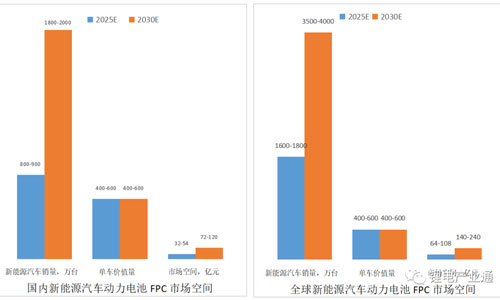
With the continuous increase in the penetration rate of new energy vehicles, the market space for FPC (Flexible Printed Circuit) and CCS (Combined Charging System) in the power battery of new energy vehicles is expected to reach approximately 14-24 billion USD globally and 7.2-12 billion USD domestically by 2030. Furthermore, the market space for new energy vehicle CCS is expected to reach 35-60 billion USD globally and 18-30 billion USD domestically by 2030.
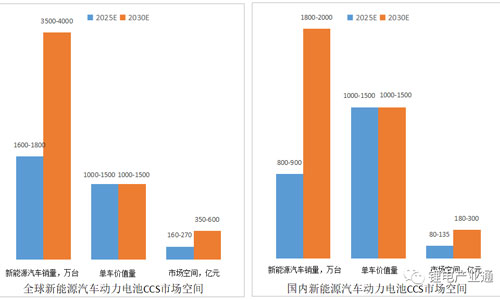
Simultaneously, under the dual-carbon goals, the energy storage industry is expected to experience significant growth. Analysts point out that the growth in the energy storage battery sector becomes a new driving force for battery FPC/CCS demand, with an anticipated additional growth space of 33% by 2030.

CCS integrated busbars feature various technological routes coexisting, diverse developments in integration processes, and continuous advancements in related materials, equipment, and processes.
CCS integrated busbars consolidate components such as conductive bars and control circuits (voltage, temperature collection) within the battery module into a single module. This integration achieves functions such as high-voltage series-parallel connection of battery cells, temperature collection, voltage collection, and over-current fuse, exhibiting characteristics like high integration, good reliability, compact structure, and small volume. These properties make it space-efficient, suitable for automated assembly, and applicable to large-scale batch production. CCS integrated busbars find wide applications in various fields, including new energy vehicles and energy storage devices.
In recent years, the thriving development of the new energy electric vehicle industry, coupled with continuous advancements in power battery technology, has driven progress toward high safety, high integration, lightweight, and low-cost directions. As a crucial component of new energy battery packs, the materials and integration processes of CCS integrated busbars are also evolving in the same direction. Currently, in addition to traditional wiring harness solutions, integrated and lightweight FPC/PCB solutions are rapidly gaining traction. Moreover, FFC (Flat Flexible Cable) and FDC (Flat Detachable Cable) solutions, which offer cost advantages, are making continuous progress. Integration processes also include injection-molded brackets, thermo-riveting, PET film hot pressing, and more. In summary, CCS integrated busbars come in diverse forms, each with its advantages, and end-users can choose the best solution based on different application scenarios.
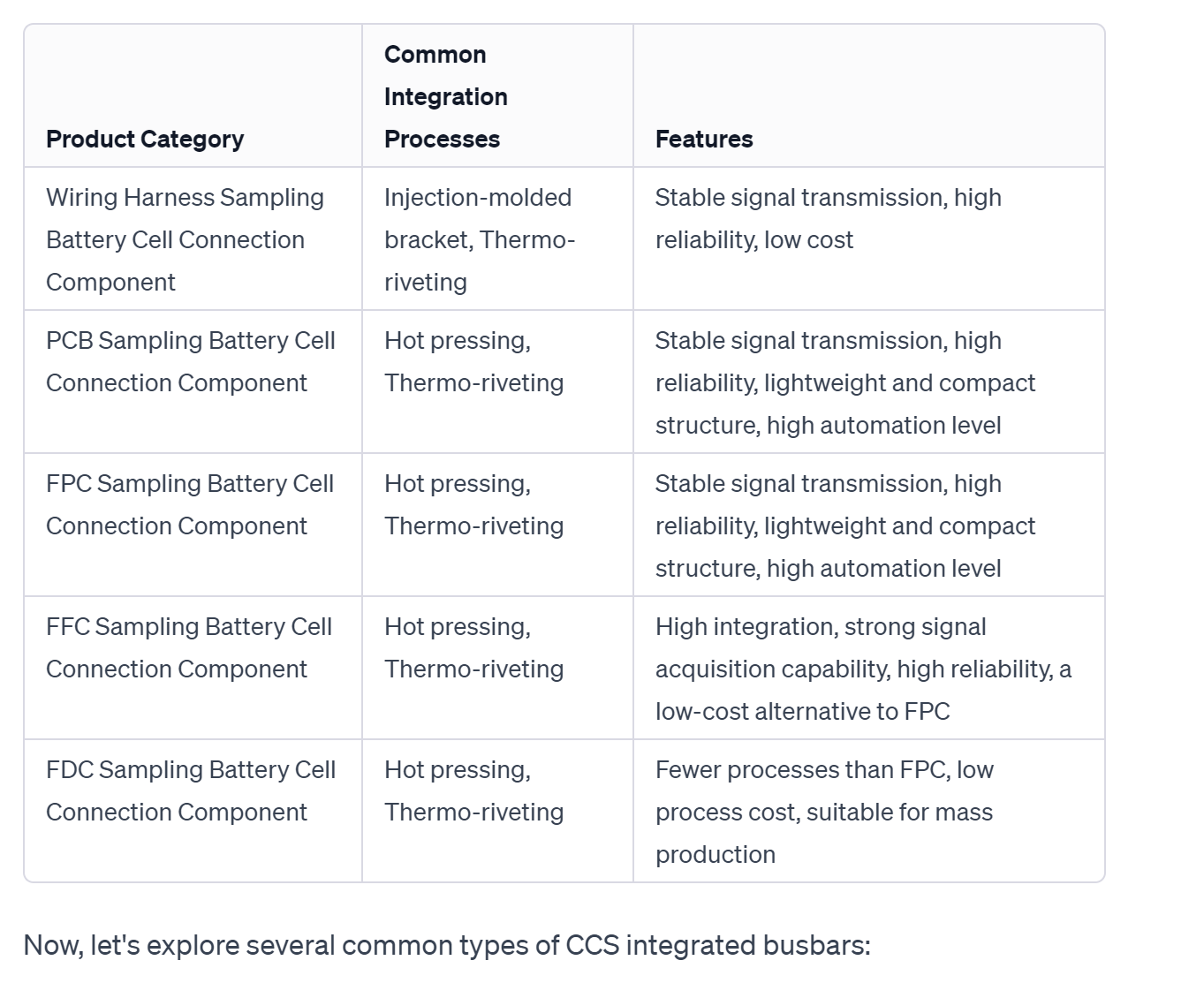
Wiring Harness-CCS
Common Structure: Wiring harness + Acquisition terminal + NTC + Conductive aluminum bar + Injection-molded/Thermo-riveting bracket
Features:
Integrated structure with mature technology
Stable and reliable signal transmission; independent wiring for voltage and temperature collection
Cost advantages
Relatively low level of automation
PCB-CCS
Common Structure: PCB + Nickel sheet + Conductive aluminum bar + Thermo-riveting or PET film hot pressing
Features:
Integrated structure for lightweight products
Stable and reliable signal transmission; integrated design of PCB for voltage and temperature collection
High level of automation
FPC-CCS
Common Structure: FPC + Nickel sheet + Conductive aluminum bar + Thermo-riveting bracket or PET film hot pressing
Features:
Extremely lightweight structure with excellent overall strength and insulation performance
Stable and reliable signal transmission; integrated design of FPC for voltage and temperature collection
High level of automation
Relatively higher cost
FFC-CCS
Common Structure: FFC + Nickel sheet + Conductive aluminum bar + Thermo-riveting or PET film hot pressing
Features:
Lightweight structure suitable for long-module collection design and cost reduction
Excellent signal acquisition capability; stable and reliable signal output
High level of automation
FDC-CCS
FDC is processed using a die-cutting process. Wiring is done through a circular knife, which, compared to FPC etching processing, has fewer processes, shorter processing time, and reduces the process cost by about 30%. It is suitable for mass production and environmentally friendly. FDC can be applied to the integration of battery pack electrical systems and CCS module, serving as a cost-reduction solution for FPC. However, the precision of FDC fuses and the arrangement of densely located lines pose challenging issues.
Currently, besides traditional wiring harness solutions, integrated and lightweight FPC/PCB solutions are rapidly penetrating the market. Additionally, cost-effective FFC/FDC solutions are continuously progressing. Integration processes also include injection-molded brackets, thermo-riveting, PET film hot pressing, and more.
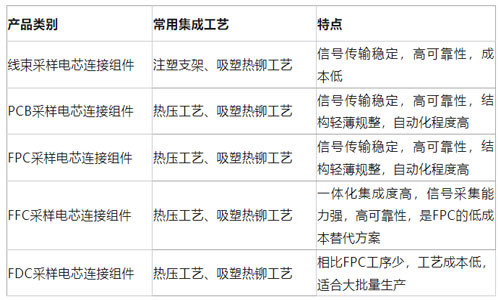
I. Industry Outlook:
The FPC products for new energy vehicle power batteries require a certain verification period and face barriers in equipment, processes, etc. Moreover, due to higher requirements in length, reliability, etc., for automotive FPC products compared to consumer electronics, they present certain difficulties and entry barriers. As the form and quantity of battery modules vary for each new energy vehicle, the specifications and quantity of power battery FPCs need customization in the early stages of design and development. Generally, the larger the capacity of the battery module, the longer the required FPC length, and the higher the technical difficulty and cost of FPC products. The emergence of FDC perfectly solves the limitations in FPC processes and costs. Under the dual-carbon goals set by the country, the demand is continually rising, providing substantial market development space.
II. Industry Development Trends:
1. Energy Storage Batteries:
With the continuous increase in the penetration rate of new energy vehicles in the market, the demand for power batteries is growing rapidly. In 2022, China's cumulative production of power batteries reached 545.9 GWh, a year-on-year increase of 148.5%. From January to April 2023, the cumulative production of power batteries was 176.9 GWh, a year-on-year increase of 28.7%. It is expected that China's power battery production will reach 613 GWh in 2023.

2. FPC Power Battery
According to the "Development Plan for the New Energy Vehicle Industry (2021-2035)" proposed in China, the sales volume of new energy vehicles in China will reach about 20% of the total new vehicle sales by 2025. Based on the accelerated development of new energy vehicles in China, it is estimated that the penetration rate of new energy vehicles in China will exceed 20% in 2025, and the proportion of new energy vehicle sales will exceed 80% by 2030. Based on new energy vehicle sales data, it is predicted that by 2025 and 2030, the global number of new energy vehicles adopting the FPC power battery solution will reach 16-18 million and 35-40 million, respectively. By 2025 and 2030, the number of domestic new energy vehicles adopting the FPC power battery solution in China will reach 8-9 million and 18-20 million, respectively.
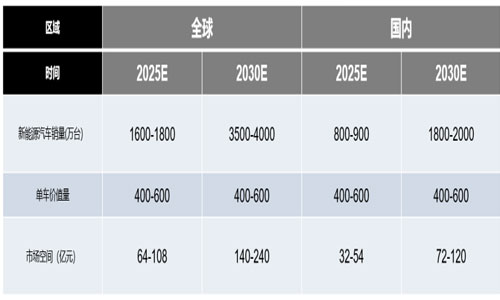
3. Customer group
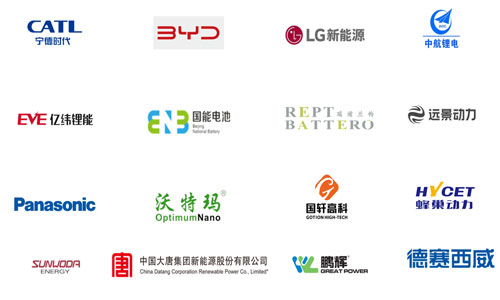
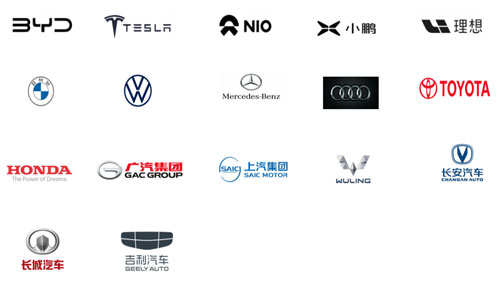
III Product Introduction
Flexible Die-cutting Circuit (FDC) is a highly reliable and flexible circuit made from polyimide or polyester film through die-cutting process. It has the characteristics of being bendable, foldable, and easily movable and scalable in three-dimensional space, allowing for integrated component assembly and wire connection. FDC can be a perfect replacement for FPC products in the new energy industry, effectively shortening the production cycle and saving costs.
1. Product Features
Environmentally friendly with no need for etching process.
High integration, ultra-thin thickness, and high flexibility.
Outstanding advantages in safety, lightweight, and organized layout.
High automation level, suitable for large-scale production with mechanical arm placement of battery packs.
2. FDC Product Classification
Name: Die-cut Flexible Harness
Material: PI + Copper Foil
Function: Voltage and temperature signal acquisition for new energy vehicle batteries and energy storage batteries.
Name: Die-cut Flexible Heating Film
Material: PI + Copper Foil
Function: Heating and insulation for new energy vehicle batteries, energy storage batteries, car seats, and rearview mirrors.
3. FDC Product Advantages
Compared to traditional FPC technology, FDC requires fewer production processes. Traditional FPC production involves 21 steps for bare board fabrication, while FDC only requires 2 steps.
FPC process
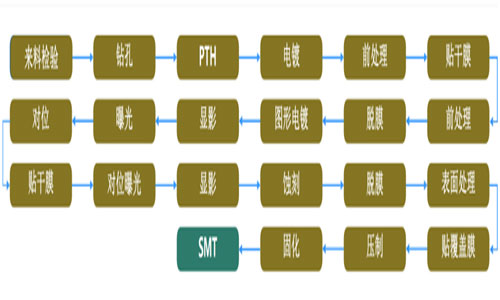
FDC process

Traditional FPC hole plating process requires more than 21-30 steps, while FDC can be completed with only 2 steps.
FDC is more environmentally friendly as it generates zero pollution and emissions through the die-cutting process.
Lower production cost: With fewer production processes, zero pollution, and higher efficiency, FDC can effectively save production and processing costs by more than 30% compared to traditional FPC.
4. FDC Technological Advantages
Line width and spacing: Achievable line width and spacing are both 0.25-0.3mm.
Performance assurance: Equivalent to traditional FPC products, passing the 1000-hour double 85 test.
Fuse function: Achievable line width and spacing of 0.15mm at specific locations to implement fuse functionality.
Compared to FPC, FDC can have lengths that are more than twice as long, with a maximum length of 2-3 meters.
5. Applications
FDC can be used in power battery modules, car seats, rearview mirrors, automotive lighting, sensing and signal systems, instrument panels, engines and gearboxes, audiovisual systems, and other components in various industries.
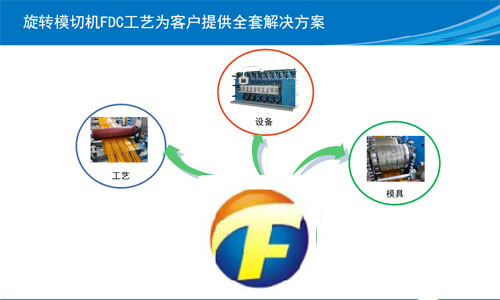
Rotary die cutting machine functions and parameters
Width range: 250mm
Max speed: 60m/min
Cutting precision: ±0.1mm
(1): The device has an automatic material break protection function, reducing material waste and improving production efficiency;
(2): It maintains stable tension and alignment, and is easy to operate;
(3): The adjustable material feeding and receiving shaft is movable, facilitating process debugging and reducing the distance for material feeding and receiving;
(4): The tool holder is cast as a whole, unaffected by external factors, ensuring processing precision and avoiding deformation;
(5): It has a high-speed and high-precision die-cutting capability, with a maximum speed of up to 60m/min;
(6): It can store up to 200 sets of processes for easy and flexible adjustment;
(7): It has an automatic alarm function of material breakage;
(8): It is equipped with an emergency stop protection system;
(9): It has an automatic material deviation correction function;
(10): Electric eye tracking, automatic tracking die cutting (optional);
(11): Synchronization can be realized for each tool holder;
(12): CCD online detection function: online detection of product size, bad product identification (hardware selection)
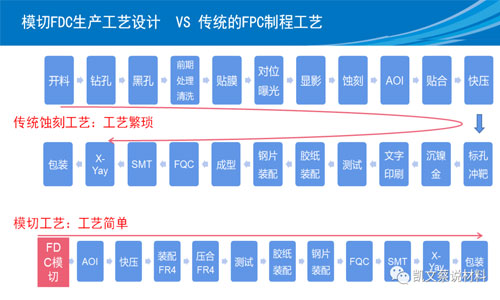
Die-cut FDC Production Process Design vs Traditional FPC Manufacturing Process
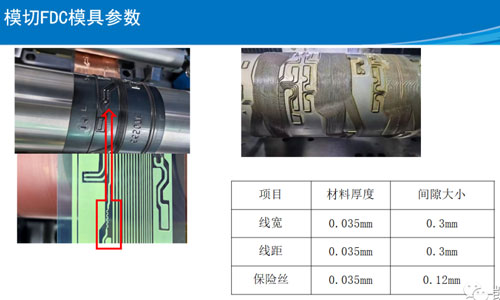
Die Cutting FDC Process Application
For circuits with line widths less than 0.3mm,
1. Etch the circuit and apply a cover film, then cut the outline and through-holes with a rotating die cutting machine.
2. Etch the circuit, apply a cover film with a rotating die cutting machine, then cut the outline and through-holes.
For circuits with line widths greater than or equal to 0.3mm,
1. Die cut the circuit, apply a cover film, then cut the outline and through-holes with a rotating die cutting machine.
Cost Comparison Analysis
Traditional etching process:
- Complex process flow
- High equipment cost
- Generates wastewater and exhaust gas
- High cost of copper recovery and production of copper scraps
- Requires multiple operators
- Requires large floor space
- High maintenance cost
Die cutting process:
- Simple process flow
- Low equipment cost
- No wastewater or exhaust gas
- Physical cutting, direct copper recovery
- No copper scraps or wires
- Requires fewer operators
- Requires less floor space
- Low maintenance cost
Reduces production costs by 40% and improves business efficiency.
Contact: Pamela
Phone: +86 189 6365 3253
E-mail: info@industryprocess.com
Whatsapp:+86 189 6365 3253
Add: Yajing Industrial Park, No. 59 Shuangjing Street, Weiting Town, Suzhou Industrial Park
We chat
